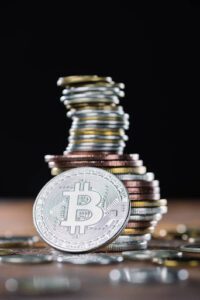Introduction
Silver trading is a fast-growing investment trend among investors seeking to diversify their portfolios. As a precious metal that has been sought after for thousands of years, silver is considered a safe haven asset that offers both short-term and long-term growth opportunities. But what is silver trading and how can one get involved in this market? In this article, we delve into the basics of silver trading, its history, factors affecting its prices, and strategies traders might consider.
History of Silver Trading
The history of silver trading is rich and dates back to ancient civilizations such as Egypt, Rome, and India, where it was used as a form of currency and a commodity for trade. During the Spanish conquest of Central America in 1519, silver was brought to Europe, causing a surge in demand, and Spain became one of the largest producers and sellers of the precious metal. Later, the Dutch played a significant role in increasing demand for silver when they began minting coins out of it during their colonial rule over Indonesia between 1602 and 1795.
Benefits of Silver Trading
Silver is considered a valuable investment due to its potential for both short-term profits and long-term growth. Silver prices tend to move inversely with the US dollar, making it an excellent hedge against currency fluctuations or economic downturns. Silver also tends to be more volatile than other investments, providing traders with an opportunity to make quick gains by taking advantage of short-term price movements in the market. During times of economic uncertainty, silver trading in Hong Kong retains its value better than many other assets, and investors may turn to safe-haven investments like precious metals. There is no shortage of ways to invest in silver, from physical coins and bars to ETFs or futures contracts.
Types of Silver
There are two main types of silver available for purchase – physical silver and paper silver. Physical silver comprises coins or bars that are tangible bullion that can be purchased from coin shops or online dealers. Physical bullion is available in various sizes, ranging from one-ounce coins to 400-ounce bars, and its price carries certain premiums based on supply and demand and the minting costs associated with each piece of bullion purchased. Paper silver includes ETFs or futures contracts, which are investment vehicles that represent ownership of silver without actually holding the physical metal.
Different Types of Silver Traders
Investors have several options when it comes to investing in silver, including bullion dealers, futures brokers, and online platforms. Bullion dealers specialize in purchasing and selling physical precious metals such as gold and silver. Futures brokers provide investors with access to commodities markets through contracts that allow them to buy and sell certain amounts of silver at predetermined prices over certain timeframes. Online platforms offer a wide range of investment vehicles and provide investors with access to market information, analytics, and educational resources to help them make informed investment decisions.

Factors Affecting Silver Prices
The price of silver is influenced by several factors, including supply and demand, economic growth, geopolitical events, and monetary policy. An increase in demand for silver due to its industrial uses can lead to a rise in prices. Conversely, a decrease in demand for silver due to a slowdown in the economy can result in lower prices. Geopolitical events, such as wars or natural disasters, can also have a significant impact on silver prices, as they can disrupt mining and production, causing a shortage of supply. Monetary policy, such as changes in interest rates or currency values, can also impact silver prices.
